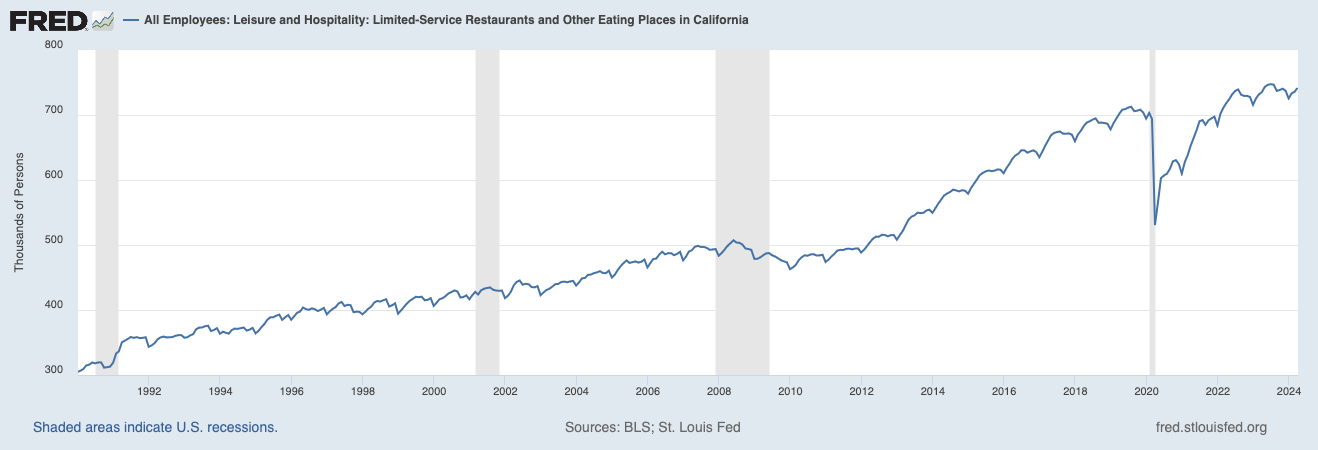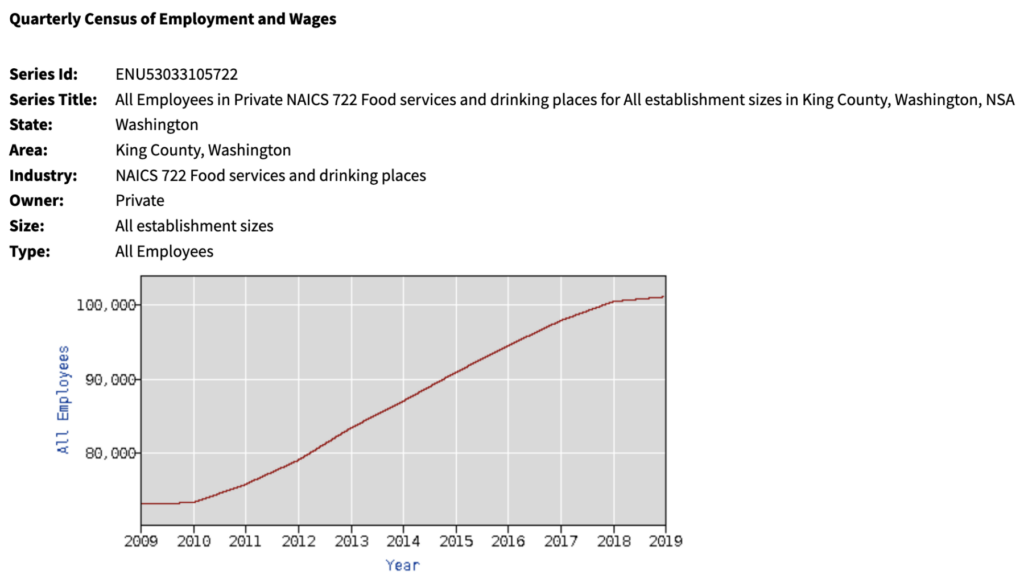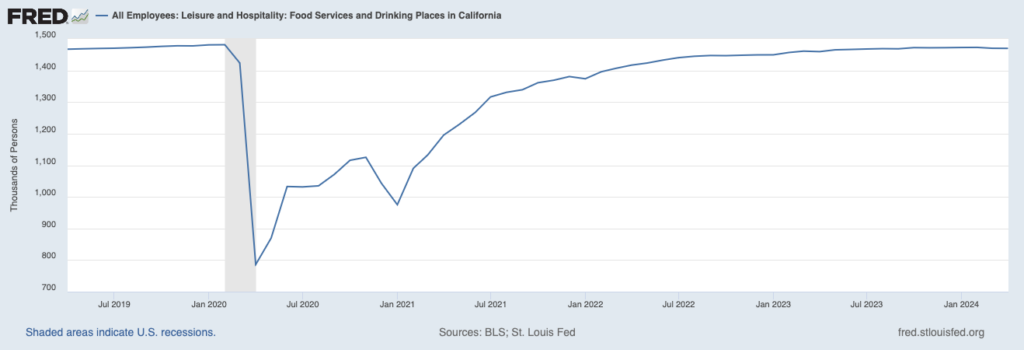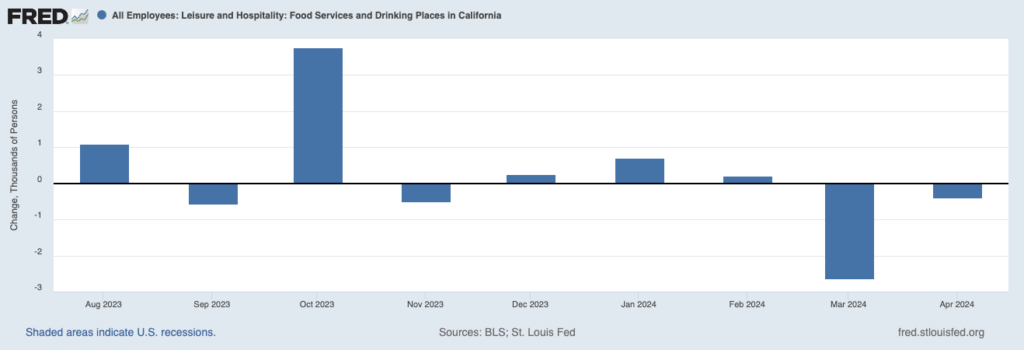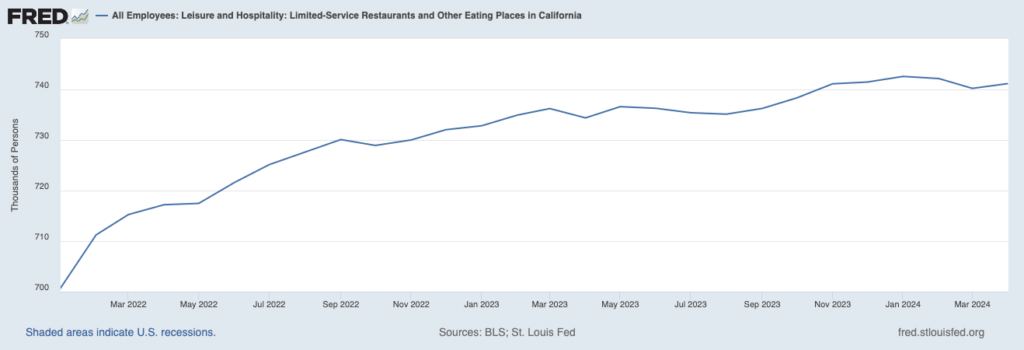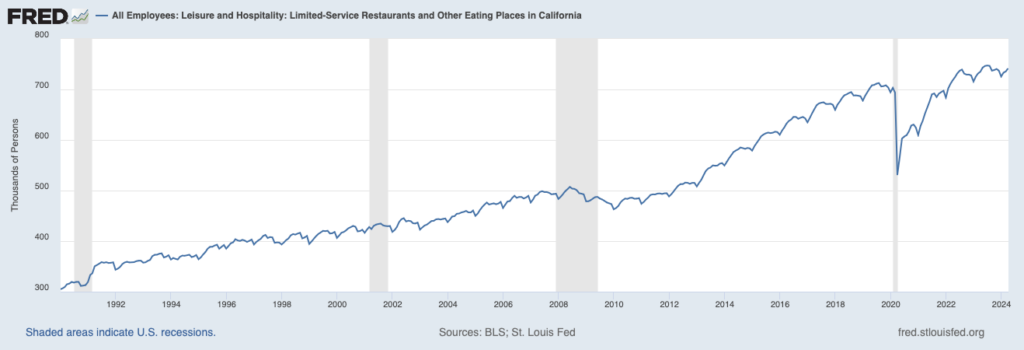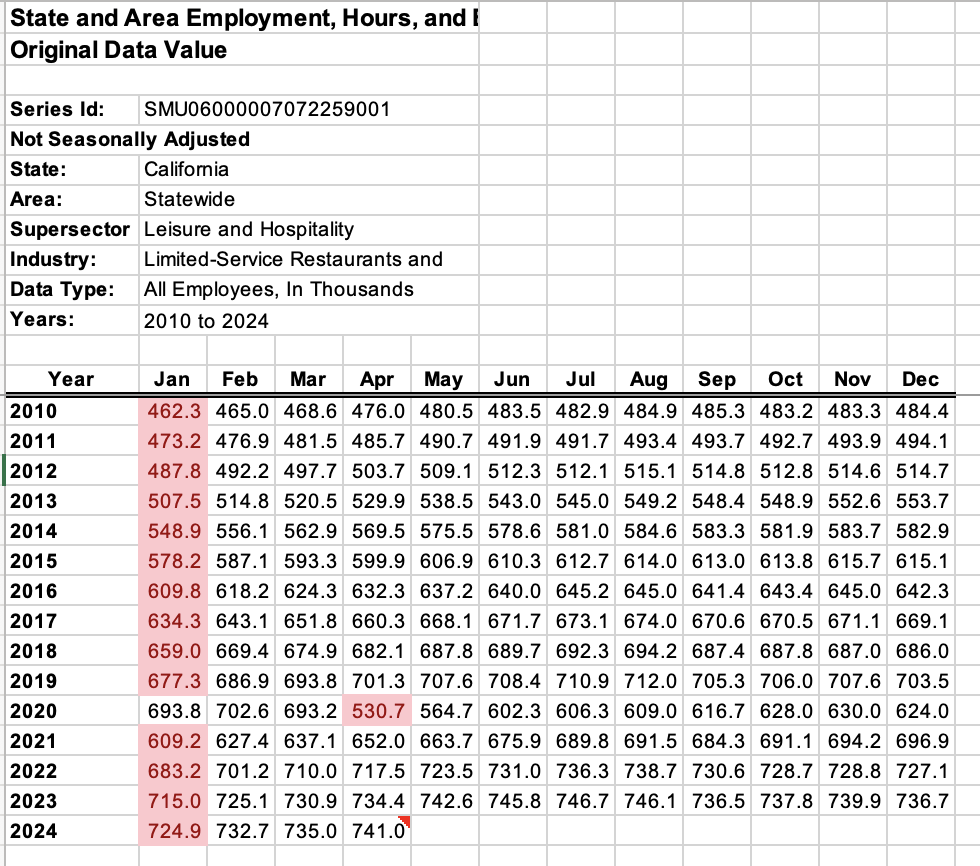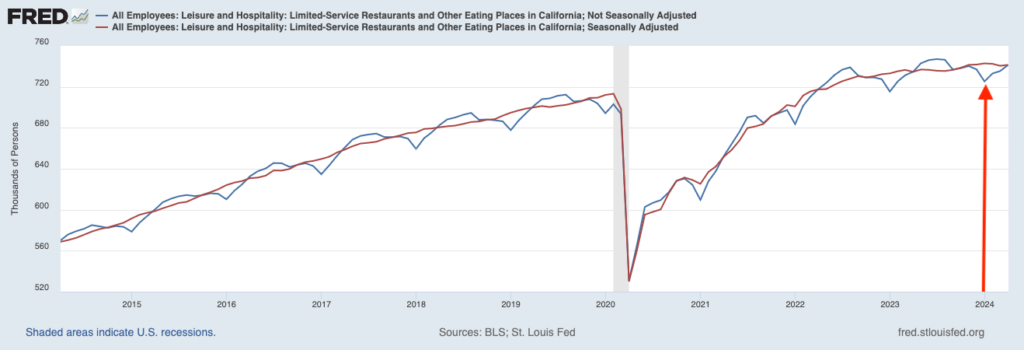@TBPInvictus here.
About a decade or so ago, the city of Seattle undertook to raise its minimum wage, over time, to $15/hour. (Massive credit to my friend Nick Hanauer for his efforts to make that happen.) What followed in the immediate aftermath of both the announcement and implementation was nothing less than a apocalyptic, collective head explosion on the right about the devastating effects the increase would have, particularly in the food services sector:
However, there’s little doubt that the city’s heralded food scene is running scared. — Weekly Standard
Restaurants are closing at higher than normal rates. — Tim “Wrong Way” Worstall
According to the Washington Policy Center, it’s already having unintended consequences: namely, forcing restaurants to close. — NY Post
I documented the idiocy and errors throughout, including the fact that critics focused, quite inappropriately, on the Seattle-Tacoma-Bellevue Metropolitan Statistical Area (MSA), an area vastly larger and more populated than the city of Seattle proper (King County). But Mark Perry, who led the charge, was never one to let the truth get in the way of a good narrative.
Using the Quarterly Census of Employment and Wages – a very accurate survey that comes with a long lag – we can drill down to King County and see, quite clearly, that the restaurant sector continued hiring apace throughout the incremental increases in the minimum wage. All of the naysayers were, in a word, wrong.
It should come as no surprise, sadly, that the Post is back at it, this time with California’s minimum wage. Here is their story titled “California fast food restaurants have cut 10,000 jobs thanks to state’s $20 minimum wage: trade group.” Behold:
“California fast food restaurants have slashed nearly 10,000 jobs because of the state’s new $20 minimum wage as struggling franchises cut labor costs and raise prices to survive, a major trade group said Thursday. […]
“Manzo said nearly 10,000 jobs have been cut across fast food restaurants since Newsom signed California Assembly Bill 1287 into law last year, adding that officials were living in a “fantasyland” by thinking that drastic wage increases will help workers or businesses.”
I mean, if Manzo said it, it must be true, right? Well, couple of things.
Barry has written extensively about denominator blindness, i.e. throwing out a number without any context whatsoever. Is 10,000 restaurant jobs a lot, relatively speaking, or a little? Does the state have 15,000 restaurant jobs overall or 1,500,000? Well, the number is actually very close to the latter (1.470 million):
So, 10k on 1.470 million is less than 1 percent — 0.68% to be exact. But is it even true? No. It is not. Since last August, just prior to Newsom signing the legislation, employment in the sector is flat, changing by such a small amount as to be statistically insignificant (+2k):
Misinformation, particularly from the right, sadly, is now ubiquitous. Many people simply want their priors confirmed, and right wing outlets are more than happy to oblige. I’m reminded, yet again, of the famous Jonathan Swift line: “A Lie Can Travel Halfway Around the World While the Truth Is Putting On Its Shoes.” This is the world in which we now live. Question everything.
UPDATING:
Spent some time investigating the origins of Manzo’s NY Post claim and found myself (suprise!) at the Hoover Institution, which apparently riffed off a story that appeared in the WSJ in March. The Journal did the math as follows:
California had 726,600 people working in fast-food and other limited-service eateries in January, down 1.3% from last September, when the state backed a deal for the increased wages.
So, couple of things:
The Journal, Hoover, and Post used a subset of restaurant employees, i.e. SMU06000007072259001 Limited-Service Restaurants and Other Eating Places. Fair enough, although it only captures, as noted, a subset of the entire category, and the other, full-service restaurants, may have been growing. But whatever. We’ll go with it.
I’m 99.9% certain that the Journal got the number from BLS. However, quite importantly, BLS only offers the series without seasonal adjustment, which can make a meaningful difference, as we shall see. The St. Louis Fed’s FRED – one of the internet’s greatest resources – takes many series and seasonally adjusts them. Which produces this shorter-term look. Hmm. Doesn’t seem to jibe with the Journal’s narrative.
To highlight the importance of seasonal adjustments, below is a longer view of the same series without seasonal adjustments. What’s fascinating is that the series peaks annual in the fall (when Newsom signed the legislation) and drops precipitously by January; this is the exact timeframe deceitfully targeted by the Journal.
Looking at the chart above in table format (from 2010), it becomes quite evident that, on a NSA basis, the trough in this series occurs, with precision, in January. Every January. Save for the year of the pandemic:
So the Journal — either deliberately or by accident — took advantage of the discrepancy between the Sept and Jan NSA and SA differential:
A friend at the St. Louis Fed confirmed the shenanigans: “Using NSA data is one of the most common mistakes I see in data reporting. Even when I talk to the public people seem skeptical of the seasonal adjustment process and why it is done.”
So, the point remains: Wall St. Journal, Hoover, NY Post are generally not where you want to be getting your news, assuming you’re a truth-seeker.

